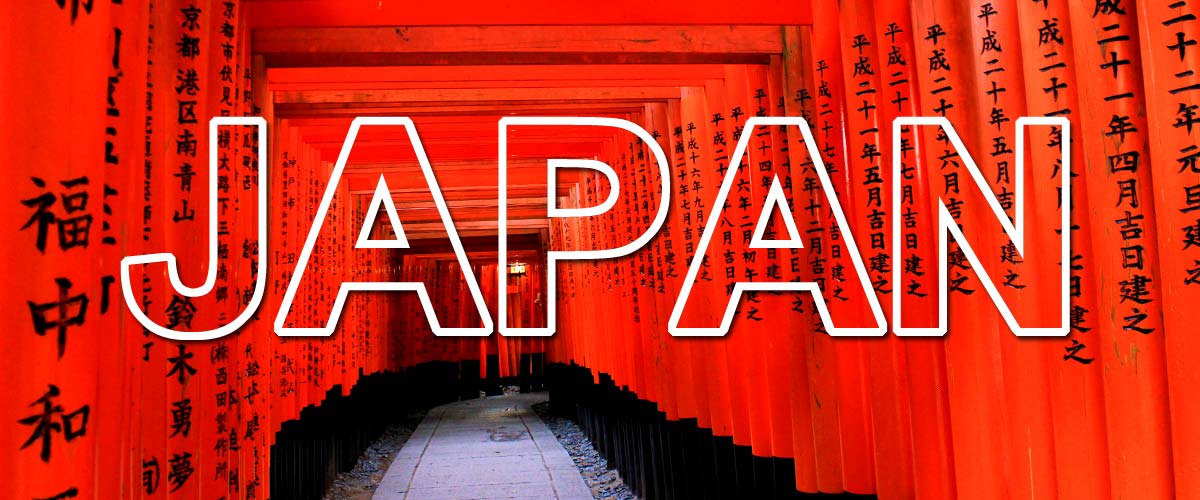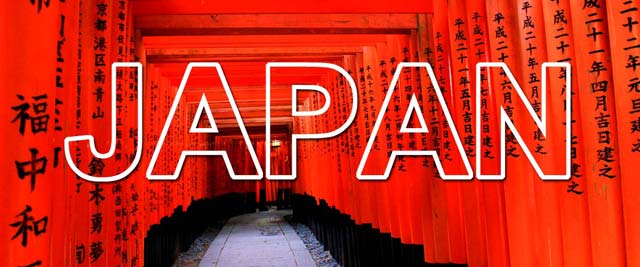

Late Mar–Late Apr (Peak Season)
Cherry blossom season starts from south to north Japan.
End Apr–Early May (Peak Season)
Golden Week when Japanese people have one week holiday.
June–July
Rain but humid in Hokkaido.
Aug
Hot and humid but cooler in Hokkaido.
Mid Aug (Peak Season)
Obon week holiday.
Sept
Typhoons may appear for a few days.
Mid Sept–Early Dec
Autumn colours start from north to south Japan.
New Year (Peak Season)
Many places are closed over New Year period.
Feb
Sapporo Snow Festival with ice sculptures.
Book flights several months in advance if visiting Japan during peak season for the best fare. I booked Air France/KLM flight, LHR to NRT (Tokyo Narita) for £500 return. Flight booked through the airline’s website, the same price as other options. Prices fluctuate so best to check different airlines and booking options.
Direct flights to Japan are available with Japan Airlines (JAL), All Nippon Airways (ANA), British Airways and Virgin Atlantic Airways.
For visa advice contact your local Embassy or Consulate General of Japan. There is also visa information on the Ministry of Foreign Affairs of Japan website.
www.mofa.go.jp/j_info/visit/visa/index.html
Traditional ryokans, hotels, apartments and capsule pods are some options to choose from. Accommodation in Kyoto and Takayama can be difficult to find, especially during peak season. It is advisable to book in advance. I booked via the Japan Travel Centre and stayed at two ryokans and a range of 3 to 5 star hotels. They were centrally located with decent sized rooms.
When travelling across Japan, the luggage delivery service is convenient. For £20 per suitcase the luggage company will transfer baggage from one accommodation to another. I used this service to transfer luggage from Tokyo to Kyoto and then Kyoto to Tokyo hotels. A small overnight bag for short stays in Takayama and Miyajima was sufficient. I booked the luggage service via the Japan Travel Centre.
Japan has an excellent transport system. It is vast and efficient. Train stations in Tokyo, Kyoto and Osaka are huge, like metropolises. Trains are clean and fast. The transport system is extremely organised. Directions, announcements, signage and ticket machines are also in English. If you get lost ask staff, who will guide you. JR Pass is very useful. It includes travel by Shinkansen trains and covers the main travel costs in Japan. Tokyo has the busiest metro in the world. Trains are a convenient mode of transport in Tokyo. Kyoto is smaller and easy to get around by metro, bus and taxi.
Types of train include the Shinkansen high speed bullet trains, local, limited, express and the metro. The quality of service is excellent. The trains are efficient, clean and comfortable. People queue on the platforms before boarding. Some trains in major cities have women only compartments. Avoid the rush hour, if possible. It wasn’t as crowded as anticipated.
Buses are a great way to see a place when there is less traffic. But, journeys can take longer at peak times. Kyoto has an excellent bus network and bus stops are closer than stations to some sights. Many buses charge a flat rate fare which is paid onboard.
Taxis are convenient and inexpensive for short journeys. The journey from Narita Airport to Tokyo is costly so other options are recommended. Some taxi doors close automatically. If the driver doesn’t understand English then show destination details written in Japanese or the hotel’s business card.
Japan Rail (JR) Pass is valid for 7, 14 and 21 days travel. It is convenient, flexible and cost effective if travelling by Shinkansen trains. In my opinion a great deal. The JR Pass can be used on most Shinkansen bullet trains, JR bus, JR train lines, JR-West Miyajima ferry and more. It can only be purchased from outside Japan by temporary visitors. Purchase the JR Pass from sales offices or agents listed on the official website. I booked via the Japan Travel Centre. They give you an Exchange Order voucher.
On arrival in Japan ensure your passport is stamped ‘Temporary Visitor’ at the airport, as only then will the JR Pass be issued. At the JR Pass offices, exchange the Exchange Order for the JR Pass book. There is no refund for lost JR Passes. Long distance journeys should be reserved. Reservations can be made and changed at no extra cost. There are two classes, Green Car (1st Class) and Ordinary.
HyperDia website helps to plan your train journeys and includes the train’s track number. JR Pass does not include Nozomi and Mizuho trains so click on the ‘more options’ button on HyperDia and untick the ‘Nozomi/Mizuho/Hayabusa Shinkansen’ box. Tick the box if travelling to Hakodate by the Hayabusa Shinkansen train which is included in the JR Pass. Helpful hint is to print the timetables and show when reserving seats in Japan.
JR Pass website japanrailpass.net/en/
Train timetables hyperdia.com/
There are numerous passes to choose from. In Tokyo, the 24 hour subway ticket is convenient (Adult/Child ¥800/¥400). In Kyoto, I used the day bus pass (Adult/Child ¥500/¥250) and day subway pass (Adult/Child ¥600/¥300), depending on sights planning to visit on a specific day. Nikko has a day bus pass (¥500). Other passes include the SUICA and PASMO card for longer stays.
Ticket prices depend on the journey. Buses generally have a flat rate and accept payments onboard. At train stations you can pay the minimum fare at the ticket machine, then at the destination pay the difference using the fare adjustment machine before exiting the ticket barrier.
Prices are reasonable. Meals can cost under £10. There is no tipping. Japan has a great selection of cuisine from around the world. There are markets, stalls, tea houses, vending machines, cafes and restaurants selling a vast range of Japanese food. Exquisitely stylised dishes, sushi, bento box meals, heart warming bowls of noodle soup and tangy pickles are a few of the culinary delights in Japan. Chopsticks become easier to use with practice, but can ask for cutlery. Many hotels provide Japanese and Western style breakfasts. Japanese breakfasts usually consist of rice, fish or egg, miso soup, nori seaweed and pickles. A unique Japanese fine dining experience at a ryokan is a must.
Tokyo is home to many flagship stores including the 12-storey Uniqlo fashion store, Tokyu Hands and Loft department stores. Akihabara known as Electric Town is the centre for electronics and gaming. Designer boutiques are in the Ginza area. Kyoto has many popular brand names and quaint wooden traditional handicraft shops. Namba Walk is a vast underground shopping district in Osaka. Isetan department store is located across Japan and has an extensive selection of food.
Temporary visitors are eligible for tax free shopping in Japan on items that will be taken out of the country. Shops have tax free signs. Save 8% on consumable goods ¥5000–¥500,000 and non-consumable goods over ¥10,000 when bought at one store at the same time. Take your passport. They will attach a purchase proof document in your passport which will later be removed by customs at the airport on departure.
tax-freeshop.jnto.go.jp/eng/index.php
Japanese has three main writing systems hiragana, katakana and kanji. Visitors might feel daunted by the language barrier but you will find it quite easy to get by. Most transport, accommodation, restaurants use English, especially in tourist areas. People are friendly and helpful. Useful tip is to get your hotel details, allergy information, etc. in writing in both languages beforehand to show to taxi drivers or in restaurants, if required. A smile, nod of the head to greet others and actions are great non-verbal methods of communication. Here are some basic Japanese phrases to use on your trip:
Hello/Good day Konnichiwa
Good morning Ohayo gozaimasu
Good evening Konbanwa
Goodbye Sayonara
Please Onegai shimasu
Excuse me Sumimasen
Thank you Arigato
Where is ...?... wa doko desu ka?
Where is the station? Eki wa doko desu ka?
Tokyo station Tokyo eki
Bus Basu
Toilet Toire
I would like ... ... o onegai shimasu
This/That/That one over there Kore/Sore/Are
Yes/No Hai/Iie
How much is it? Ikura desu ka?
Numbers 1–10, 11, 21, 100 and 1000 Ichi, ni, san, yon, go, roku, nana, hachi, kyu, ju, ju ichi, ni ju ichi, hyaku and sen
Quantities 1–5 (people, items, etc.) Hitotsu, futatsu, mittsu, yottsu and itsutsu